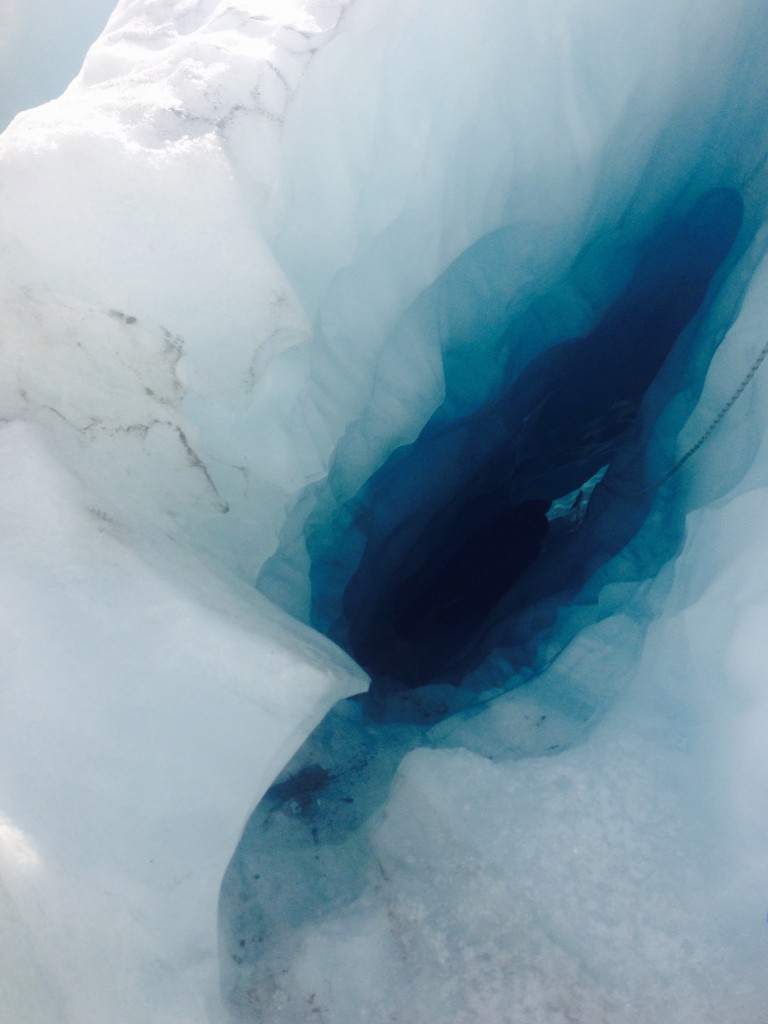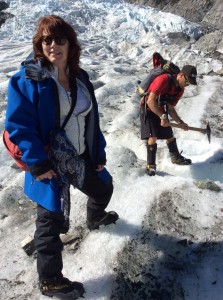“These are my co-ordinates: 43°28’1.19”S 170°11’29.5”E.
I stand at the landing zone atop the rough ice field of the Franz Josef Glacier, on the west coast of the South Island of New Zealand. I have journeyed by plane, in a bus, a car, two trains and finally by helicopter; 18,777 kilometres and 23 hours to reach this precise spot.
I am about to embark on the most dangerous challenge of my life….” [read the entire essay]
Congratulations to Pamela Dillon, whose beautiful personal essay “Each Step Through the Ice Is a Wish” appeared yesterday in the Globe and Mail‘s Facts & Arguments section. Pamela has been a student in my online memoir course Memories into Story I, offered through University of Toronto’s School of Continuing Studies.
Pamela shares a little about the genesis of the essay and her writing process here:
I was inspired to write the Facts & Arguments essay when a good friend and fellow writing salon member sent me an email about F & A’s 25th Anniversary Week. The theme was Moment of Truth. I immediately thought of my Franz Joseph climb.
The memory of that climb and the glacier cave was a transformative experience; I knew I could write something compelling about it. Within a week of sending the story off to the Globe, I received a message that it was being considered for Anniversary Week. I was advised that even if it did not make publication that week, they wanted to publish it at a later date.
Writing the piece wasn’t difficult. I have always found it easy to write to an image or a theme. The word count, however, was a challenge. As always, editing the piece down to the essential story was tricky.
As I write it’s a process of falling in love with the images and the story that is being crafted. But as with all love stories, reality eventually sets in: there are rules to follow, compromises to make, and in the case of some great sentences (even whole paragraphs) sacrifices to be made. It’s taken me years to learn: good writing requires an equal amount of good editing.
I always write in longhand first. It’s usually a long stream of consciousness. After the first draft, anything requiring research is noted and the key theme is circled; then I begin the real work of writing. I counted at least ten revisions on this piece after the first draft. This is often frustrating but so worthwhile.
When I think I may have “the final draft,” I print it out and read it aloud. At that point I realize I do not have a final draft and revise again, sometimes three or four times. Finally, I print it one more time, read it aloud, and then circle any errors or weird syntax, then go back to the computer file to craft a final version. If I’ve done it right, I print a pristine copy, which is like a gift to myself.
Then I have a glass of wine or chocolate.
Being published is like receiving a case of ultra-white copy paper and new pens delivered to your door. It’s the memory of your grade seven English teacher tapping you on the shoulder and praising your poem, or the tears in the eyes of your friend when she read the sentiments you wrote in her birthday card. It’s being able to answer with confidence the question “What do you do?” It’s a kiss from the muse, a long distance phone call from a lost love, an entry ticket to the tribal dance, and the recognition that your obsession has a place and your words have a home and that even though you’re not sure what it all means, you’re happy—
PAMELA DILLON is a writer and poet. A student of creative writing at University of Toronto, she is currently at work on a collection of short stories for her final project (Certificate in Creative Writing), a novel, and a few creative non-fiction travel pieces. Pamela’s short story “We Come and We Go” and her novel excerpt “As Good As Any Other” won top ten placements in the 2013 and 2015 Penguin Random House of Canada Student Award for Fiction, through UofT School of Continuing Studies. Pamela has been published on the CBC Books – Canada Writes website, in the literary journal Tin Roof Press, in the William Henry Drummond / Spring Pulse Poetry Anthology, and most recently, in the Globe and Mail‘s Facts & Arguments section.

